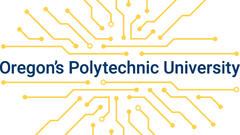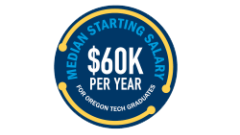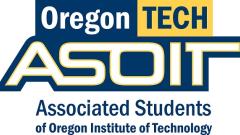Finding a Job or Internship

Student/Alumni Resources
Resource Documents
Before You Start Your Search:
All our resources are available in the Canvas course, "Internship and Job Search Resources." For further support, we encourage you to schedule an appointment with a Career Advisor. They can provide in-depth guidance on job and internship search strategies, including where to find opportunities, application timelines, and how to effectively organize your search.
Starting Your Search:
Handshake is the best tool for searching jobs and internships in your field. Searching for an internship or a job can be a long process, requiring stamina and drive! Read on for tips on how to get started. Having an effective plan can make the process feel less daunting.
Establish realistic expectations, an appropriate timeline, and a way to keep organized
It can take several months to find an internship, and six months or more to find a full-time position in your field, which means a lot of work and a lot of materials to keep organized.
Update or activate your student account on Handshake
If you haven’t yet, activate your student account on Handshake to access a vast array of internships and jobs. Upload your resume and Handshake will help you to quickly create your profile: oit.joinhandshake.com
Continue to assess yourself: What excites you about your field? What can you offer employers?
What are you good at? What’s important to you? What is your work style? These questions about your skills, interests, values and personality are important to spend time reflecting upon. What can you offer to potential employers?
If you aren't sure how to answer these questions, visit our Career Exploration page and take a free assessment.
Fine-tune your resume
Update your current resume with all your related experiences, most importantly PROJECTS. You’ve benefited from a rigorous applied education, and employers want to know about it. Projects can be in a separate section after your Education. A one-page resume is great, but if you have lots of experience two pages may work better.
Ensure your resume is optimized for Applicant Tracking Systems, which most firms use to screen candidates. Work with a Career Advisor today to learn more and to have your resume reviewed.
Identify employers and positions that are a good fit for you
Use library databases, search engines, LinkedIn and networking to identify organizations to research. Speak to your professors and other trusted advisors. Talk to people in fields that interest you to find out more. Read job descriptions on Handshake or other sites. Can you see yourself in that role?
Learn how to write cover letters
You must write a unique cover letter for each position you apply for, one page or less. It should be all about the employer’s needs and how you can contribute to their mission. Express your enthusiasm about joining their team! Employers want to hire those who really want to work there.
Create a LinkedIn profile, or optimize the one you have
LinkedIn is your online resume, and it must reflect your best professional self. Include a professional headshot (picture). Review others’ profiles to see how they represent themselves. Join many groups, and add lots of skills.
Focus your search efforts on networking and approaching companies directly
Identifying employers through contacts greatly increases your chances of getting an interview. Acquaint yourself with professionals in your field or target organizations. Make a list of family members, friends, classmates, professors, alumni, and connect with them on LinkedIn. See who they know.
Understand Informational Interviews
Are any of your LinkedIn or other contacts connected to your target firms? If so, request a referral from your contact so that you can set up an informational interview to find out more about the firm. Under no circumstances ask for a job during these brief chats, you are just there for information.
Be professional, courteous, and concise. Arrive with prepared questions about the individual, the firm, career pathways, and other career questions you want to explore, but anticipate a more open conversation as well.
Always follow up with a thank you note/e-mail. If you have not yet done so, ask them to connect on LinkedIn.
Be prepared for your interviews
Interviews come in many forms: virtual or phone screening followed by one or more technical, one-on-one, group, or panel interviews – there are usually multiple hoops to jump through.
Be prepared for any interview by knowing yourself, knowing your target industry, knowing the organization, and being able to talk about the value you bring. Be able to answer: “Tell me about yourself” (which means tell me about your professional self), and “Why should I hire you?”
Have several questions prepared to ask them, but not about salary or benefits.
Don’t forget to be prepared on the logistics side as well: if the interview is in person you need to know where you are going, how are you getting there, and how long will it take (allow lots of extra time), what are you wearing? If this is a virtual interview, create a quiet place with no distractions, no outside noise and no distracting background. Remember to still dress the part.
Follow up all interviews with thank-you notes. E-mails are fine; use them to expand on your interview answers if you didn’t answer a question completely.






